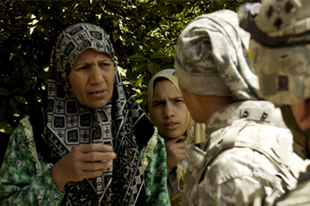 Photo: U.S. Army (Flickr)
Photo: U.S. Army (Flickr)
Around the world, military troops and civilian peacebuilders are overlapping and sharing space in unprecedented ways. In Afghanistan, for example, a ‘civilian surge’ of development specialists and humanitarian workers is central to the Obama administration’s strategy in the war. In Iraq, Thailand, the Philippines, and many other places, civil-military interaction is raising complex questions and fresh dilemmas, which have only begun to be addressed.
Posts in the April 2010 issue of Peace Policy:
Larissa Fast argues that conflating 'defense, diplomacy, and development' in warzones is controversial and even dangerous. Read »
Lisa Schirch and David Cortright highlight shifting relationships among military and civilian peacebuilding forces as the U.S. military takes on greater development and humanitarian work in the name of security and stabilization. Read »
Myla Leguro explains how peacebuilders in Mindanao, the Philippines, are engaging the military in the peace process. Read »
About Peace Policy
Peace Policy is a blog that offers research-based insights, commentary, and solutions to the global challenge of violent conflict. Each issue features the writing of scholars and practitioners who investigate the causes of violent conflict and who seek to contribute to effective solutions and alternatives to the use of force.
Peace Policy is edited by David Cortright, director of policy studies at the Kroc Institute, dcortrig@nd.edu.
Visit the latest issue of Peace Policy at peacepolicy.nd.edu